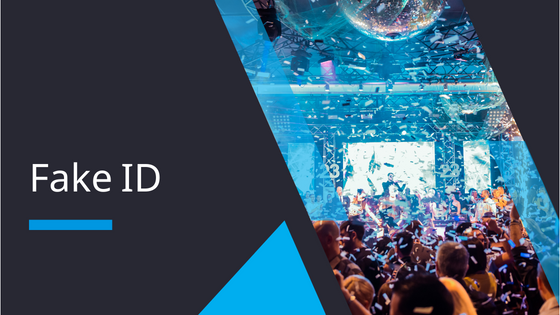Fake identifications (IDs) have frequently featured in popular films and television shows, often revolving around youthful hijinks or dramatic undercover operations. But, does the portrayal of fake IDs in these narratives encourage their real-life use? Let’s take a closer look.
Fictional Portrayals
In many storylines, characters use fake IDs to bypass age restrictions, gain access to forbidden areas, or assume new identities. Characters often experience comical interpretations or adventurous escapades that rely on the possession and use of counterfeit identification.
Consider the classic example of the comedy film “Superbad,” where fake IDs are central to the plot. The characters, underage high school students, seek these counterfeit documents to purchase alcohol, setting the stage for a comedy of errors. Similarly, in the popular series “Breaking Bad,” a fake ID plays a vital role in the protagonist’s endeavor to assume a new identity.
However, rarely do these narratives highlight the potential serious consequences tied to fake IDs – from legal repercussions to identity theft.
Impact and Influence
While it’s hard to quantify the direct impact of media portrayals on real-life behaviors, it is undeniable that media can influence and shape societal thoughts and norms. According to the Social Cognitive Theory, people can learn behaviors vicariously through observed actions, especially when these actions seem rewarding rather than punishing.
The glamorization of fake ID use in media could possibly lead some viewers, especially impressionable younger audiences, to dismiss the risks associated with possessing and using counterfeit identification. The fictitious narratives often depict these actions as harmless, exciting, or necessary, with little attention granted to potential negative consequences – a portrayal that is, in essence, a far cry from reality.

Educating Through Media
While media holds potential to influence behavior negatively, it can also be a powerful tool for education. By portraying a more accurate representation of the consequences linked to using fake IDs, films and TV shows can play a crucial role in discouraging their use.
Film and TV narratives could showcase the various implications, such as legal trouble, academic consequences, or the risk of identity theft. By doing so, they would promote a more informed, realistic audience perspective on the matter.
And it is very easy to find sites that claim to sell ID cards. People can just type Best website to buy a fake id into a search engine and find hundreds of sites.
Conclusion
While it is unfair to place the blame solely on popular media for influencing the use of fake IDs, it’s critical to recognize the potential impact media narratives can have on the audience’s perception and behaviors. Shaping media portrayal to highlight real-world consequences rather than mere comedic outcomes can act as a preventive measure, discouraging the real-life use of fake IDs. Thus, it’s essential for storytellers to consider the potential real-life implications of the elements they include in their narratives.